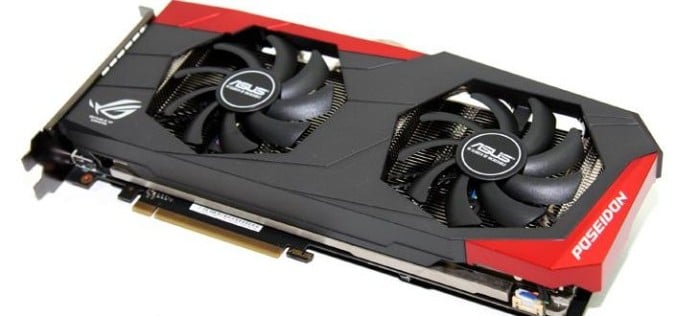Final Thoughts & Conclusion
The Asus ROG Poseidon Platinum GTX 980 Ti is a ridiculasly high-powered GPU which happens to be our favorite type here on Bjorn3D. The ability to run on the Air  cooling portion of the Poseidon is a big plus to help offset the addition water cooling until a later time. Once you throw some water at the Poseidon the operating temps drop through the floor and even under the heaviest gaming load it would only hit 46°C under water, The hybrid nature of the Asus ROG Poseidon gives it uniquely effective cooling while still getting the top end performance from the massively powered GTX 980 Ti.
cooling portion of the Poseidon is a big plus to help offset the addition water cooling until a later time. Once you throw some water at the Poseidon the operating temps drop through the floor and even under the heaviest gaming load it would only hit 46°C under water, The hybrid nature of the Asus ROG Poseidon gives it uniquely effective cooling while still getting the top end performance from the massively powered GTX 980 Ti.
With built-in water inlets and out of the box Air ready capabilities it is by far one of the coolest pieces of hardware we’ve ever seen, had hands on and benched. Props to Asus for delivering DirectCU II H2O with such style and effective cooling.
The 10 phase power under the hood doesn’t hurt our feelings a bit, we love the Dual Dust free fan setup and the inclusion of long like 10K Capacitors really clenches the deal. It didn’t hurt our feelings that there was no noticeable increase in sound level on the test rig. In a quiet 32 dBA environment we would get the same reading one meter away from the front of the test bad as we got for ambient noise.
GPU’s bearing the same cores and similar speeds are going to produce similar chart results and we saw that with the two GTX 980 Ti’s on our charts so features play a large role in making the scoring call and the Poseidon GTX 980 Ti has the features enthusiasts want but it’s a better card for water cooling enthusiasts. If you have no plans on water cooling the Poseidon is still an excellent choice for every day use and for Overclocking. Asus hit another out of the park home run on overclocking this one with a massive 1363MHz Core and 8000MHz memory
Our Overclock on the Asus ROG Poseidon Platinum GTX 980 Ti isn’t a ragged edge OC, we hit some artifacts at 1383MHz on Air and could run it at 1380MHz for glory testing but when you hit the ragged edge of OC you need to back down 20 or 25MHz and run at that speed which is what we have done here. We also observed higher boost clocks than reported but we chose to stick with the software recorded boost clock because you can’t say “the boost clock was recorded at 1531MHz” when the highest boost was a spike in performance. Asus quality and performance speaks for itself without the misleading momentary spikes in the boost. Running that far out on the ragged edge of operation at times can produce ghost numbers on the software due to minor glitching and we prefer to stay out of the grandstand arena but expect that momentary blood rush heart pounding adreniline surge when you see the core spiking well above your expected boost.
We realy couldn’t find anything we didn’t like about the Asus ROG Poseidon Platinum GTX 980 Ti, it has the ROG Style, Asus quality, high performance components, a highly binned core, 10 phase power, 10k caps, water and air cooling and more than a ton of eye candy and bragging rights. If you are into high-end GPU’s we can heartily recommend having your own “Poseidon Adventure” with this Asus ROG GTX 980 Ti.
| Pros | Cons |
|
|
 Bjorn3D.com Bjorn3d.com – Satisfying Your Daily Tech Cravings Since 1996
Bjorn3D.com Bjorn3d.com – Satisfying Your Daily Tech Cravings Since 1996









